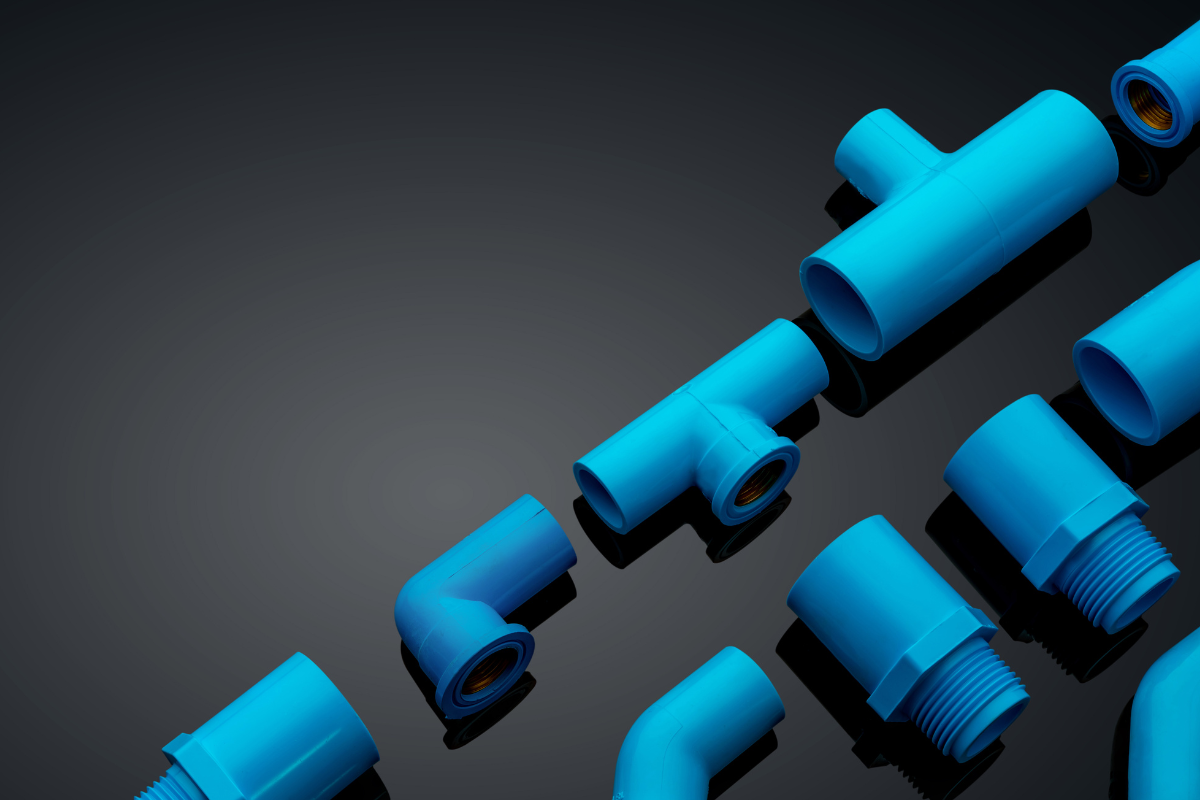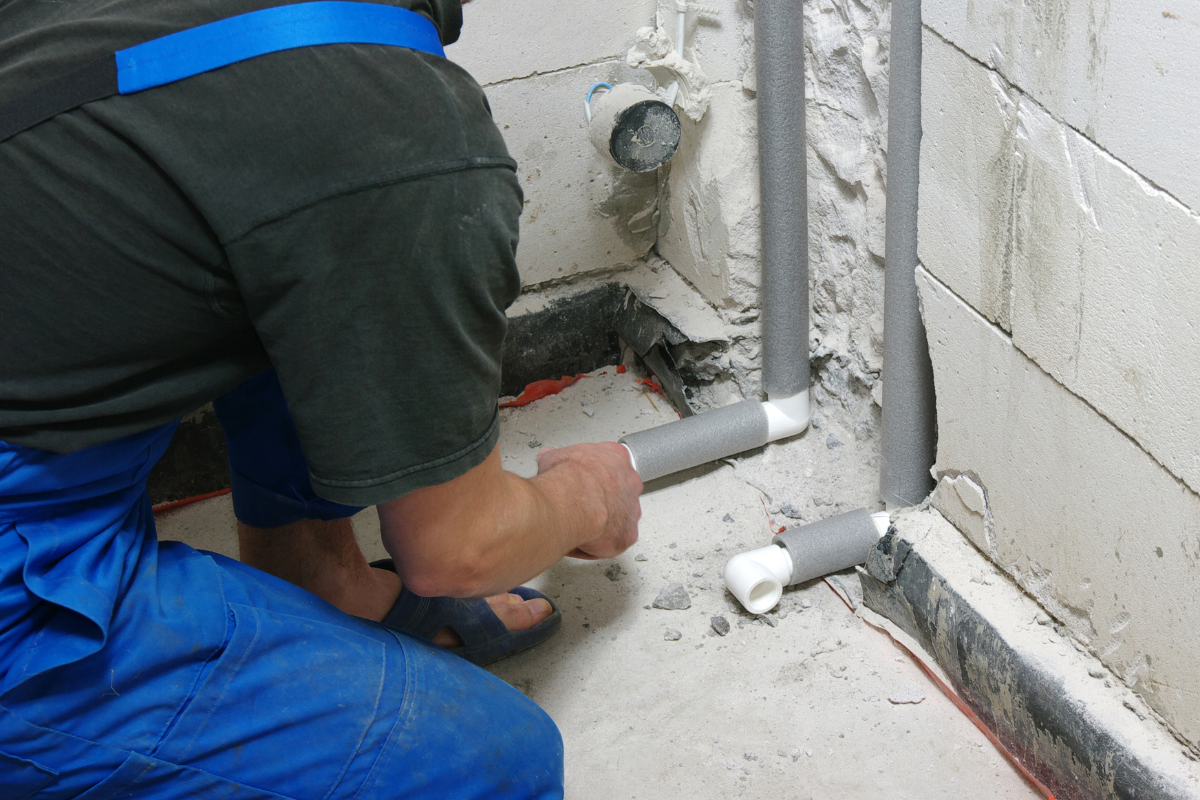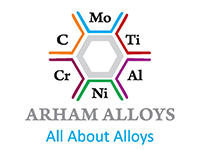When operating in corrosive environments, the choice of pipe fittings can make or break the safety, performance, and longevity of your systems. Whether in chemical processing plants, marine applications, or wastewater treatment facilities, exposure to aggressive substances demands careful consideration of material composition, design compatibility, and coating techniques.
At Arham Alloys, we understand how critical it is to match the right pipe fittings with the correct corrosive environment. In this blog, we’ll guide you through everything you need to know about selecting pipe fittings for corrosive environments, ensuring your systems remain safe, durable, and efficient.
Understanding Corrosive Environments
Corrosive environments refer to operational conditions where materials are prone to chemical degradation. These can involve:
- Chemical exposure (acids, alkalis, solvents)
- High salinity (coastal or marine environments)
- High temperatures and humidity
- Oxidizing agents (chlorine, nitrates)
- Biological corrosion (microbial activity in water systems)
Each corrosive element affects materials differently. Choosing the wrong type of pipe fitting material or design can result in leaks, system failures, costly downtime, and even safety hazards.
Key Factors to Consider When Selecting Pipe Fittings for Corrosive Environments
Here are the most important parameters to evaluate when selecting pipe fittings:
1. Material Compatibility
The most crucial factor is the resistance of the fitting material to the specific corrosive agent.
✅ Common Corrosion-Resistant Materials:
| Material | Key Properties | Ideal For |
| Stainless Steel (304/316) | Excellent corrosion and oxidation resistance | Marine, Food, Pharmaceuticals |
| Alloy 20 | High resistance to sulfuric acid | Chemical processing |
| Hastelloy® | Resists strong oxidizers like chlorine | Harsh chemical plants |
| Titanium | Lightweight, high corrosion resistance | Aerospace, desalination |
| PVC/CPVC | Non-metallic, cost-effective | Low-pressure corrosive fluids |
316 stainless steel is the go-to material for many corrosive environments, offering molybdenum-enhanced protection against chlorides and acids.
At Arham Alloys, we offer pipe fittings in stainless steel 304, 316, and other exotic alloys tailored to your environmental needs.
2. Corrosion Type
Different forms of corrosion require different preventative measures.
- Uniform Corrosion: General surface thinning; mitigated with resistant alloys.
- Pitting Corrosion: Localized attack; requires high-purity stainless steel (e.g., 316L).
- Crevice Corrosion: Occurs in joints and fittings; addressed with smooth designs and welded connections.
- Galvanic Corrosion: Happens when dissimilar metals connect; resolved by material compatibility.
Evaluate the specific corrosive mechanism your fittings will face, and select materials and designs that eliminate weak points.
3. Operating Temperature and Pressure
Corrosion resistance changes with temperature and pressure:
- High temperatures accelerate oxidation and chemical attack.
- Elevated pressures can force corrosive fluids into micro-crevices.
For high-temperature acidic environments, materials like Alloy 20 or Duplex stainless steel are more reliable than standard 304 or 316.
At Arham Alloys, we help customers match pressure ratings (e.g., Class 150/300/600) and temperature tolerances to avoid premature fitting failure.
4. Fitting Design and Connection Type
The shape, size, and type of connection used in a pipe fitting influence its resistance to corrosion:
- Threaded fittings may trap corrosive agents in threads → Crevice corrosion
- Welded fittings offer smoother flow and fewer corrosion-prone gaps
- Socket weld fittings are ideal for high-pressure systems but require precision welding
- Butt-weld fittings have fewer internal crevices and are more suitable for corrosive environments
Choose seamless fittings whenever possible for corrosive environments to minimize weld impurities and joint-related weaknesses.
5. Standards and Certifications
Always ensure your pipe fittings meet industry-recognized standards that guarantee performance in corrosive settings.
- ASTM A403 – Stainless steel wrought fittings
- ASME B16.9 / B16.11 – Factory-made fittings
- NACE MR0175 / ISO 15156 – Materials for sour gas environments
- ASTM B366 – For nickel alloys and special-grade fittings
Arham Alloys supplies fittings certified to these standards, ensuring performance under aggressive environmental conditions.
6. Surface Finish and Coatings
Surface finish matters more than you think. Rough surfaces trap corrosive particles and accelerate degradation.
- Opt for polished finishes (e.g., Ra ≤ 0.8 μm for hygienic applications)
- Apply coatings like epoxy, PTFE, or galvanization (for non-stainless materials)
- Consider passivation for stainless steel to enhance its corrosion resistance
We offer passivated stainless steel fittings for pharmaceutical and food-grade applications and custom-coated fittings for highly acidic conditions.
✅ Why Stainless Steel Pipe Fittings Are the Preferred Choice
Among all available materials, stainless steel pipe fittings remain the industry standard for corrosive environments due to:
- High corrosion resistance
- Excellent mechanical strength
- Temperature tolerance
- Low maintenance
- Recyclability
Especially grades like 316, 316L, and Duplex stainless steel are ideal for systems transporting:
- Saltwater
- Acids
- Chemicals
- Organic solvents
- Slurries
Arham Alloys specializes in precision-engineered stainless steel pipe fittings that stand up to harsh conditions across industries.
🏭 Industry Use Cases of Pipe Fittings in Corrosive Environments
Let’s explore some real-world applications where corrosion-resistant pipe fittings are non-negotiable.
1. Chemical Plants
- Use high-nickel alloys or stainless steel 316
- Require seamless fittings to avoid leaks under high pressure
- Prefer butt-weld fittings for minimal contamination risk
2. Desalination and Marine
- Constant exposure to saline water = high chloride levels
- Duplex stainless steel or Super Duplex (e.g., UNS S32750) is preferred
- Corrosion-resistant flanges, elbows, and reducers essential
3. Food & Beverage
- Hygienic-grade 316L fittings with polished interior
- Must resist cleaning agents and acidic food products
- Prefer tri-clamp or sanitary welded joints
4. Oil & Gas
- Hydrogen sulfide (H₂S) and chlorides = high-risk corrosion
- Fittings must comply with NACE MR0175 standards
- Welded and flanged joints preferred over threaded
5. Pharmaceuticals
- Ultra-clean environments
- Use of ASTM A270 fittings with electropolished surfaces
- Sanitary butt-weld fittings for sterile systems
🔧 Tips to Maximize Fitting Longevity in Corrosive Environments
- Avoid Mixing Metals: Galvanic corrosion happens when dissimilar metals are used in the same system.
- Use the Right Gaskets and Seals: Ensure elastomers and gaskets are also corrosion-resistant (e.g., PTFE).
- Follow Proper Welding Procedures: Poor welds can trap corrosive media and reduce structural strength.
- Regular Inspection: Spot early signs of pitting, stress cracking, or discoloration.
- Proper Cleaning: Periodic flushing with neutralizing agents reduces corrosive build-up.
🔍 Why Choose Arham Alloys for Corrosion-Resistant Pipe Fittings
Arham Alloys is a trusted name in the supply of high-performance pipe fittings designed specifically for corrosive and high-pressure environments. Here’s why businesses across industries choose us:
- 🔩 Wide Inventory: Stainless steel 304, 316, Duplex, Super Duplex, Alloy 20, and more
- 🔧 Custom Manufacturing: Tailored fittings for non-standard dimensions or exotic materials
- 📜 Certified Quality: ASTM, ASME, ISO, and NACE-compliant fittings
- 🚛 Quick Delivery: Reliable nationwide shipping
- 🤝 Expert Consultation: Guidance to help you select the best fittings for your environment
📌 Conclusion
Choosing the right pipe fittings for corrosive environments is not just about durability—it’s about system integrity, operational safety, and long-term cost-efficiency. Material selection, fitting design, compliance with global standards, and finishing techniques all play a pivotal role.
At Arham Alloys, we help you eliminate the guesswork. Whether you need high-grade stainless steel fittings, custom alloys, or expert guidance, we deliver corrosion-proof solutions you can trust.
Frequently Asked Questions (FAQs)
1. What are corrosive environments in piping systems?
Corrosive environments involve exposure to substances like acids, alkalis, saltwater, gases, and oxidizing chemicals that can degrade materials over time. These are common in industries such as chemical processing, pharmaceuticals, oil & gas, and marine applications.
2. Why is it important to choose the right pipe fittings for corrosive conditions?
Selecting the correct pipe fittings ensures system integrity, prevents leaks, reduces maintenance costs, and prolongs the lifespan of equipment in harsh environments. The wrong material or design can lead to rapid degradation and system failure.
3. Which materials are most resistant to corrosion for pipe fittings?
Stainless steel grades like 316, 316L, Duplex, and Super Duplex, along with alloys like Alloy 20, Hastelloy, Inconel, and Titanium, offer excellent corrosion resistance. Non-metallic materials like PVC and CPVC are also used for certain chemical applications.
4. What is the difference between 304 and 316 stainless steel fittings?
316 stainless steel contains molybdenum, which significantly enhances its resistance to chlorides and acidic environments compared to 304. For corrosive settings, 316 or higher is preferred over 304.
5. What types of corrosion should I be concerned about?
Common types include pitting corrosion, crevice corrosion, galvanic corrosion, stress corrosion cracking, and uniform corrosion. The selection of material and design should address these specific risks.
6. Are welded fittings better than threaded ones for corrosive environments?
Yes. Welded fittings minimize crevices where corrosive substances can accumulate, making them more suitable for high-pressure and corrosive applications compared to threaded fittings.
7. How do I know if a pipe fitting is corrosion-resistant?
Check if the fitting complies with standards such as ASTM A403, ASTM A182, or ASME B16.9, and ensure it’s made from materials like 316L, Duplex stainless, or corrosion-resistant alloys. Certificates of compliance can verify the material grade.
8. Can I use the same fittings for acids and alkalis?
Not always. Some materials resist acids better than alkalis and vice versa. For example, Alloy 20 is ideal for sulfuric acid, while Hastelloy resists a broader range of acids and oxidizers. Always consider the specific chemical environment.
9. What standards should pipe fittings for corrosive environments comply with?
Fittings should meet international standards such as:
- ASTM A403 (wrought stainless fittings)
- ASME B16.9 / B16.11
- ASTM B366 (nickel alloy fittings)
- NACE MR0175 (for sour gas service)
10. How does temperature affect corrosion resistance?
Higher temperatures can accelerate corrosion rates. Materials like 316, Alloy 20, and Hastelloy maintain their corrosion resistance at elevated temperatures, whereas 304 may fail faster under heat and chemicals.
11. What is galvanic corrosion and how can I prevent it?
Galvanic corrosion occurs when two dissimilar metals are in contact in a corrosive electrolyte, causing one metal to corrode faster. Prevent it by:
- Using similar metals
- Installing dielectric unions
- Applying protective coatings
12. Can Arham Alloys supply custom fittings for corrosive systems?
Yes. Arham Alloys offers custom-fabricated pipe fittings in a variety of corrosion-resistant materials, sizes, and designs to suit your application’s specific pressure, temperature, and chemical exposure needs.
13. What kind of pipe fittings are best for marine and saltwater applications?
316 stainless steel, Super Duplex, and Titanium are ideal for marine and saltwater environments due to their resistance to chloride-induced corrosion and pitting.
14. How do I maintain pipe fittings in corrosive environments?
- Perform regular inspections for pitting or discoloration
- Flush systems to remove corrosive deposits
- Use protective coatings or linings where possible
- Replace worn-out gaskets and seals promptly
15. Why should I choose Arham Alloys for corrosion-resistant pipe fittings?
Arham Alloys offers:
- High-quality certified fittings
- A wide range of corrosion-resistant materials
- Custom manufacturing and expert consultation
- Compliance with ASTM, ASME, and NACE standards
- Reliable and timely delivery across India








